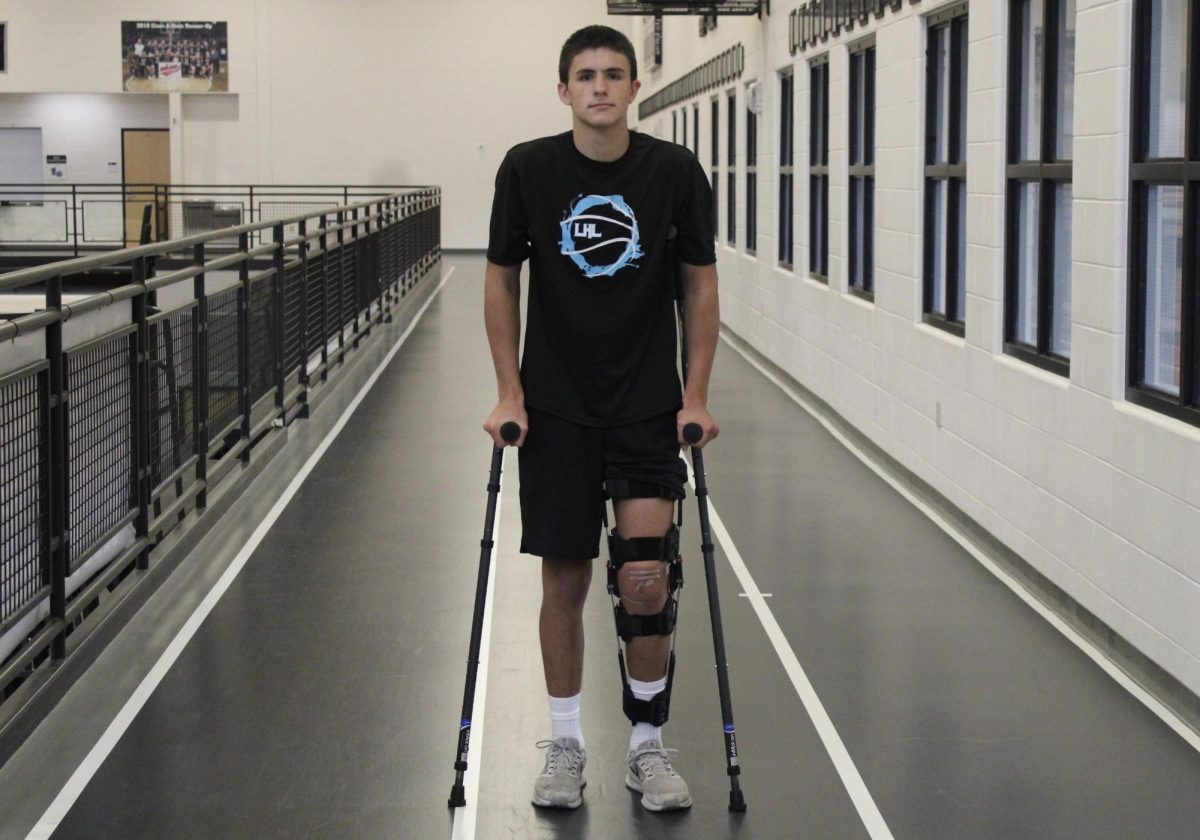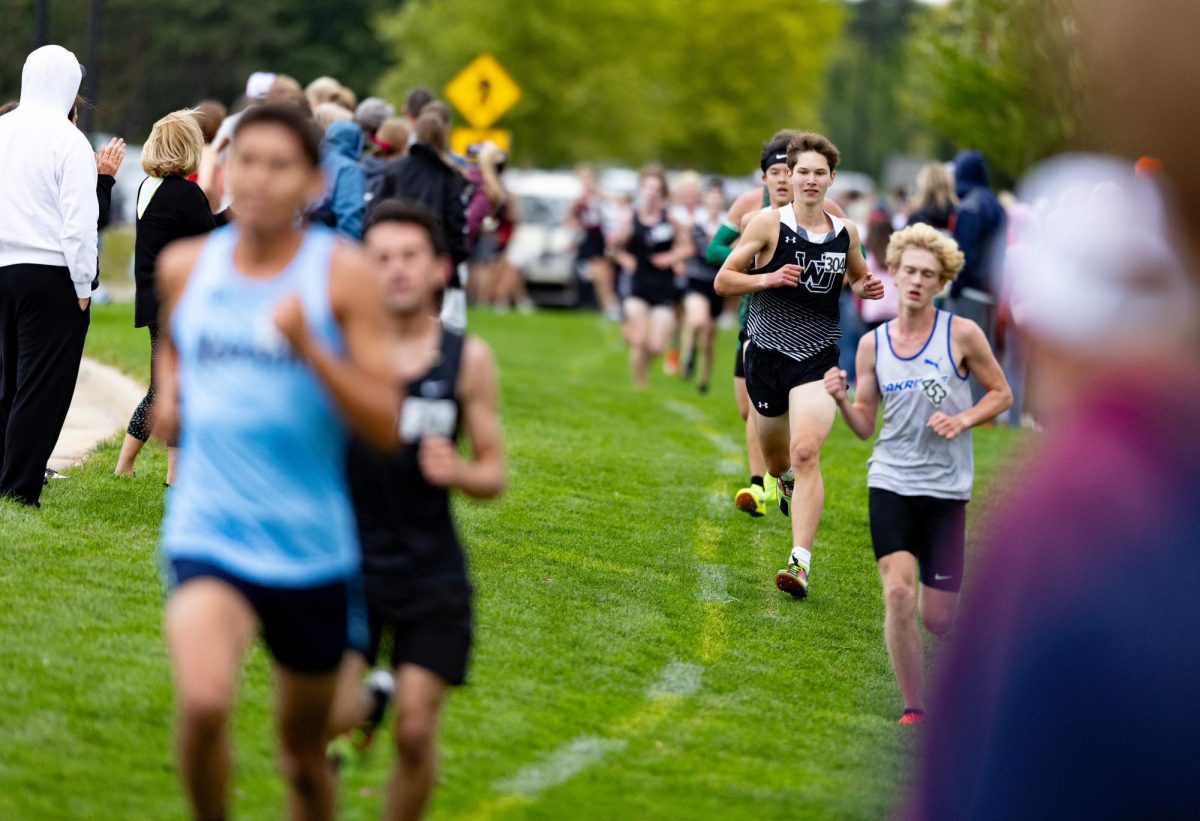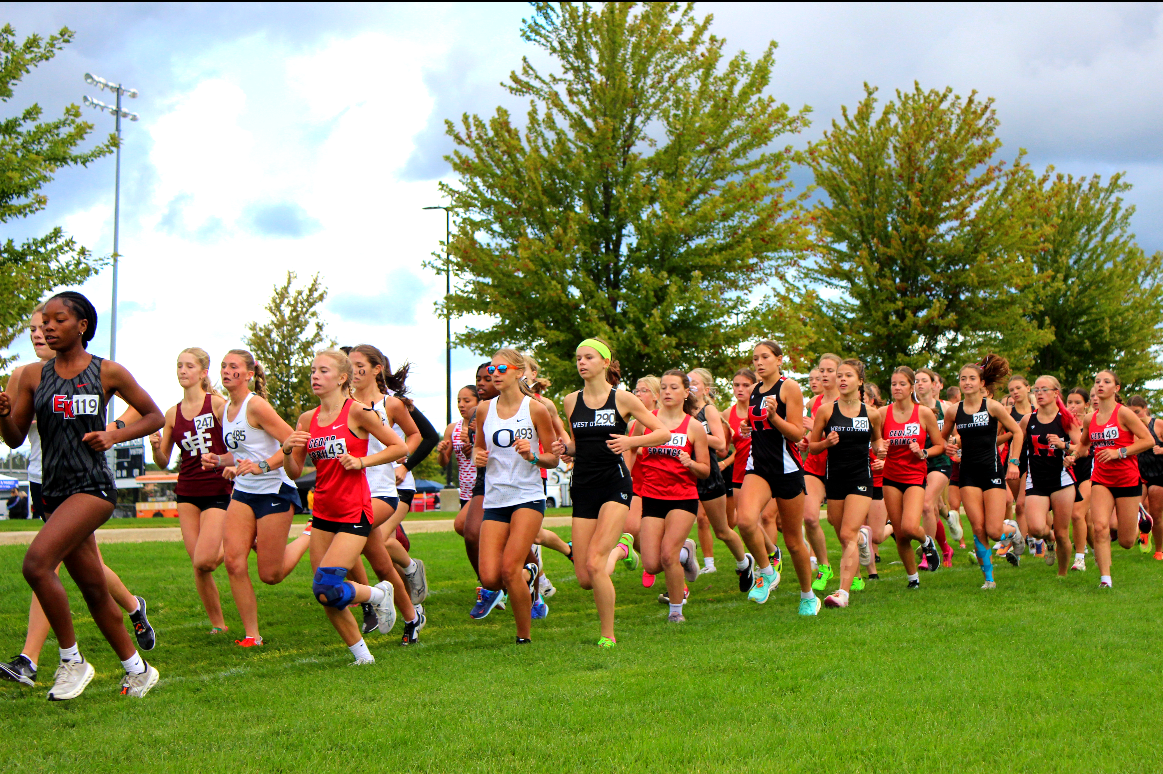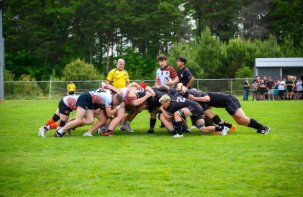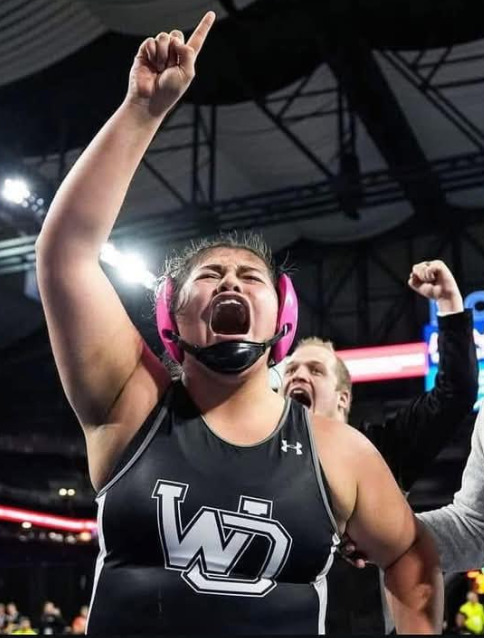“I felt a pop and my leg went loose.” As Frosh. Lincoln Overway pushed the quarterback out of bounds, his teammate came to help in the matter, missing the tackle and driving his shoulder into Overway’s left knee–caving it in until it nearly touched the ground–shredding the ligament. Overway fell to the ground. Lying there, unable to rise, he believed his leg was broken. As his leg hung, the athletic trainers and paramedics rushed to assist. Even with spiked adrenaline, the pain was unbearable, leading his brain to run on overdrive. He remembers everything down to the minuscule details: what he heard, what he saw, how it smelled, even how he was screaming.
“When I went down I thought I broke it,” he said, but “after an MRI we found out I had torn my ACL, and grade two tore my MCL.” Many athletes go through similar experiences every season, leading to long recovery processes. It’s important to remember that it gets easier when the person injured has help to push through the challenges they face.
The eldest brother to Overway, Dominic, went through a similar circumstance his senior year. Even though he faced adversity, he overcame it and now plays as the starting tight-end for Alma College. “I tore it during a football game (senior year). A guy landed on the outside of my leg causing my knee to cave while I was still standing, causing a lot of strain and eventually a tear of the MCL.”
Dominic’s injury and recovery were traumatic, but he had the internal drive and external support to enjoy football in college.
A second shared experience lies with Jared Osborne, a Holland Christian graduate:
“First game of my senior year of high school, I tore my ACL and MCL–complete tears of both. I planted my foot, turned, and got bent backward.”
Many occurrences like these can be career-ending, but positively, these two athletes have made full recoveries, and have grown mentally and emotionally stronger. Encouragingly for Lincoln Overway, his injury took place his freshman year, meaning without further injury he will have his later years of high school to show real promise on the jv and varsity teams.
Knee injury is very common. “The National High School Sports-Related Injury Surveillance Study, currently in its fourth year of data collection, has found that approximately one ACL tear occurred in every 15,000 times an athlete practiced or competed.” Although often, the frequency doesn’t diminish the severity.
Lincoln Overway said the physical toll comes from daily actions. Not being able to voluntarily bend his knee makes putting on shoes, walking, traveling, sleeping, and basically any movement involving his leg–or lack thereof for an extended period of time–extremely difficult. Dominic Overway said, “Sleep was hard because I had a full leg brace on at almost all times and my knee had to remain between 0-10 degrees of flexion.”
In most cases, when a person tears a ligament–at least in the knee–the ligament can not be repaired, meaning a surgeon will have to remove what is left and replace it with something else. A patient often has three options for replacement: the patella tendon, the quad, or a cadaver.
Overway had ⅓ of his quad (upper thigh) removed to act as his ACL, creating a visual difference in size between his two legs. He says his quad hurts much more than the ACL itself.
Osborne used an achilles cadaver as his new ACL, connecting it by screws. Using his patella tendon as his new MCL. Dominic Overway was lucky enough to heal on his own; his MCL was able to reattach to itself for it was only a grade two tear, similar to Lincoln Overway’s MCL tear.
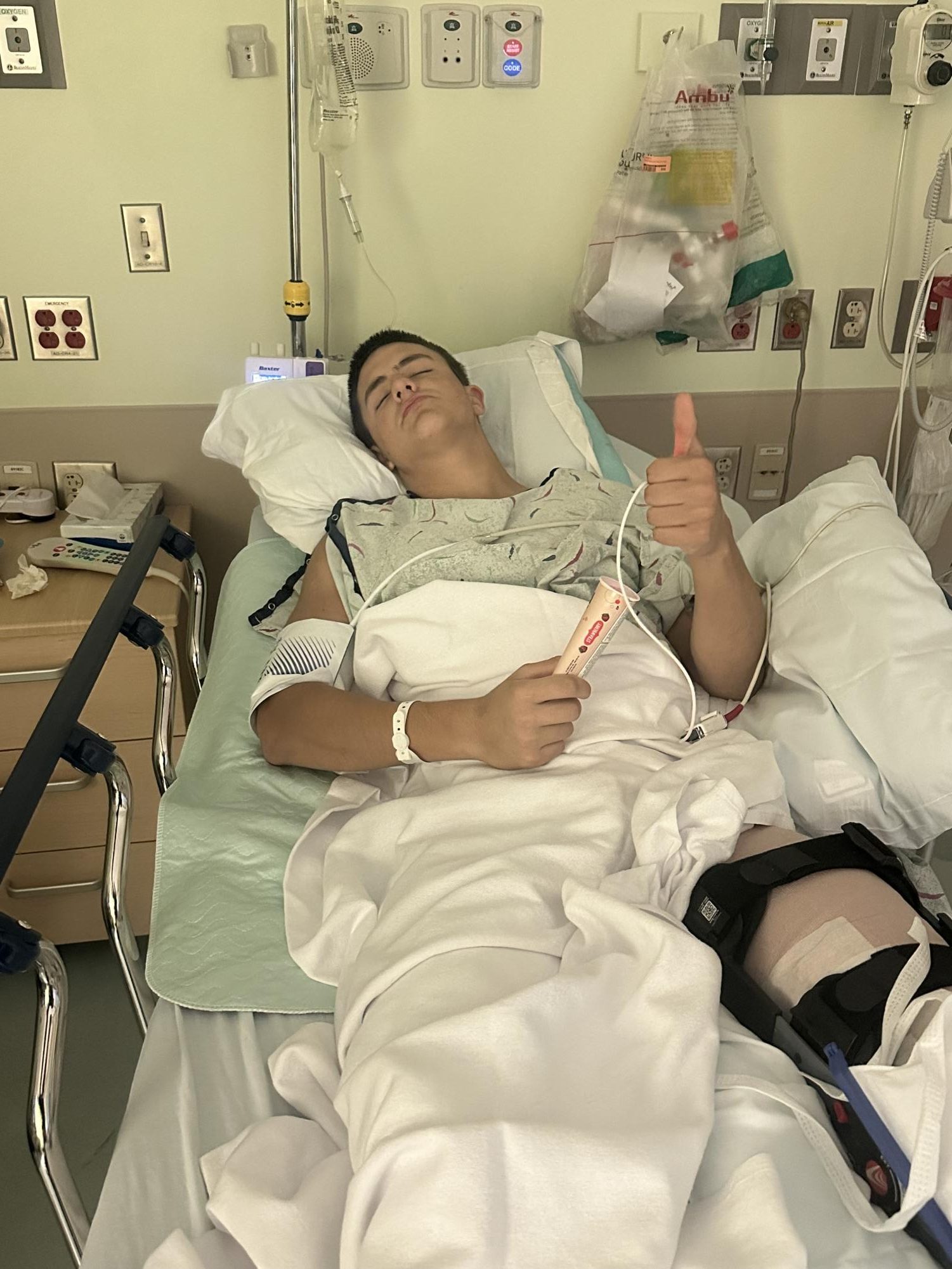 One of the most terrifying parts of surgery is after the nerve block wears off. A nerve block is a heavy anesthetic injected near the location of surgery using ultrasound guidance, ensuring precise placement, and blocking the pain receptors from receiving the pain signals. The nerve block lasts several hours to a full day, managing immediate post-surgery pain so patients feel less discomfort and need fewer pain medications. If a nerve block was not placed then the patient may freak out over the intense pain when exiting sedation. The nerve block allows for a more gradual introduction to said pain.
One of the most terrifying parts of surgery is after the nerve block wears off. A nerve block is a heavy anesthetic injected near the location of surgery using ultrasound guidance, ensuring precise placement, and blocking the pain receptors from receiving the pain signals. The nerve block lasts several hours to a full day, managing immediate post-surgery pain so patients feel less discomfort and need fewer pain medications. If a nerve block was not placed then the patient may freak out over the intense pain when exiting sedation. The nerve block allows for a more gradual introduction to said pain.
Lincoln Overway has said that the pain wasn’t all that bad post-surgery until the nerve block wore off. Even Osborne said he asked to go watch the football game his team had that night of his surgery, given he was freshly awake and his nerve block was in effect. He had to be convinced by his mother and doctor that this was not in his best interest.
Being a respected athlete, this injury has led Lincoln Overway to wonder what to fill his time with when all he knew was sports. In every season he has had something to pour his time, effort, and energy into. But now that that has been taken from him, what does he do?
Although the most advantageous piece to a smooth recovery is having someone there to help, sometimes the injured person just wants to find outlets where they aren’t reminded of what they can’t do.
For some, they pick up new hobbies. For others, they hone in on current ones. Both being healthy mechanisms to get through the time in recovery. As the time to full recovery is long–6 months for normal activity, 9 months for contact sports–it makes plenty of sense to take up something you have been putting off. Overway says he may pick up drawing again, but definitely honing in on his spiritual life and his devotionals.
He recently picked up golf and is heartbroken that he can’t currently play. The good news is that golf doesn’t require loads of weighted flexion, so he should be cleared by the spring, just in time for golf season.
Dominic Overway said “I played a LOT of video games because I was unable to do anything else.” He says he continues to play video games.
Osborne said that with so much time on his hands, there was plenty of time to deepen his relationship with Jesus Christ. While going to a private Christian school, he already had knowledge, but his injury allowed him even more time to focus on his faith. Today he is a leader at a local youth group.
The mental toll an injury takes on a person can be similar to even worse than the physical toll.
Osborne said, “For me, football was really enjoyable because I loved being a part of the team… I feel like no other sport really has the bond that football does for some reason. Maybe it’s because you are literally just beating the crap out of each other. I’m not sure”
It is very difficult mentally and emotionally when you are forced to leave something without warning. An injury will do just that; not only are you leaving the sport, but often you are leaving the team and the lifestyle that came with it.
“The mental toll that came with it once I really figured out what happened–spending three, four months on crutches trying to get back, post-surgery and during rehab–was difficult. I remember it was really tough because I was always in the trainer’s room trying to prep for surgery… For an ACL (knee injury), whatever mobility you have pre-surgery is what you will have post-surgery. After an injury like that your knee really doesn’t want to bend the same.”
Osborne goes on to describe how alone he felt post-surgery. He described himself as being at home when others are out having fun, sometimes being invited to events he can’t participate in, as they would forget the circumstances.
All three athletes agree that the dependence on another person is the most crucial piece to recovery. It can make you feel helpless or make you feel seen, depending on your support system. Osborne said that a major key to his positive mindset during the recovery process was his athletic trainer, who he became close friends with. “She was my best friend at the time.”
Dominic Overway also attributed his positive mindset to help from others, he did not name anyone in particular. “Having at least one person there, helping you, talking with you, maybe even just a friend that comes by once and a while can help a person feel like they aren’t going through the process alone.”
Lincoln Overway, although only a few weeks into the recovery process has gone through most if not all of the initial toil. He attributes his good spirits to his family, friends, and girlfriend. Those who have been there when he asks for help and when they know he needs it.
The biggest part of recovering properly is accepting help when it’s offered. If there are people in your life who seek to aid you in the recovery process, do not push them away, believing you can do it alone or believing you are a burden. Many wish to help because it not only aids you, but it gives them a sense of satisfaction. Don’t be one to take that away.
Although each athlete would never want to go through their pain again, they value the effect it has had on their character, leading them to be more humble and to see others with empathy: sharing in pain, whether physical, mental, emotional, or spiritual.
Getting through an injury is difficult, but with the right support, an athlete can emerge even stronger: mentally, emotionally, and physically.

